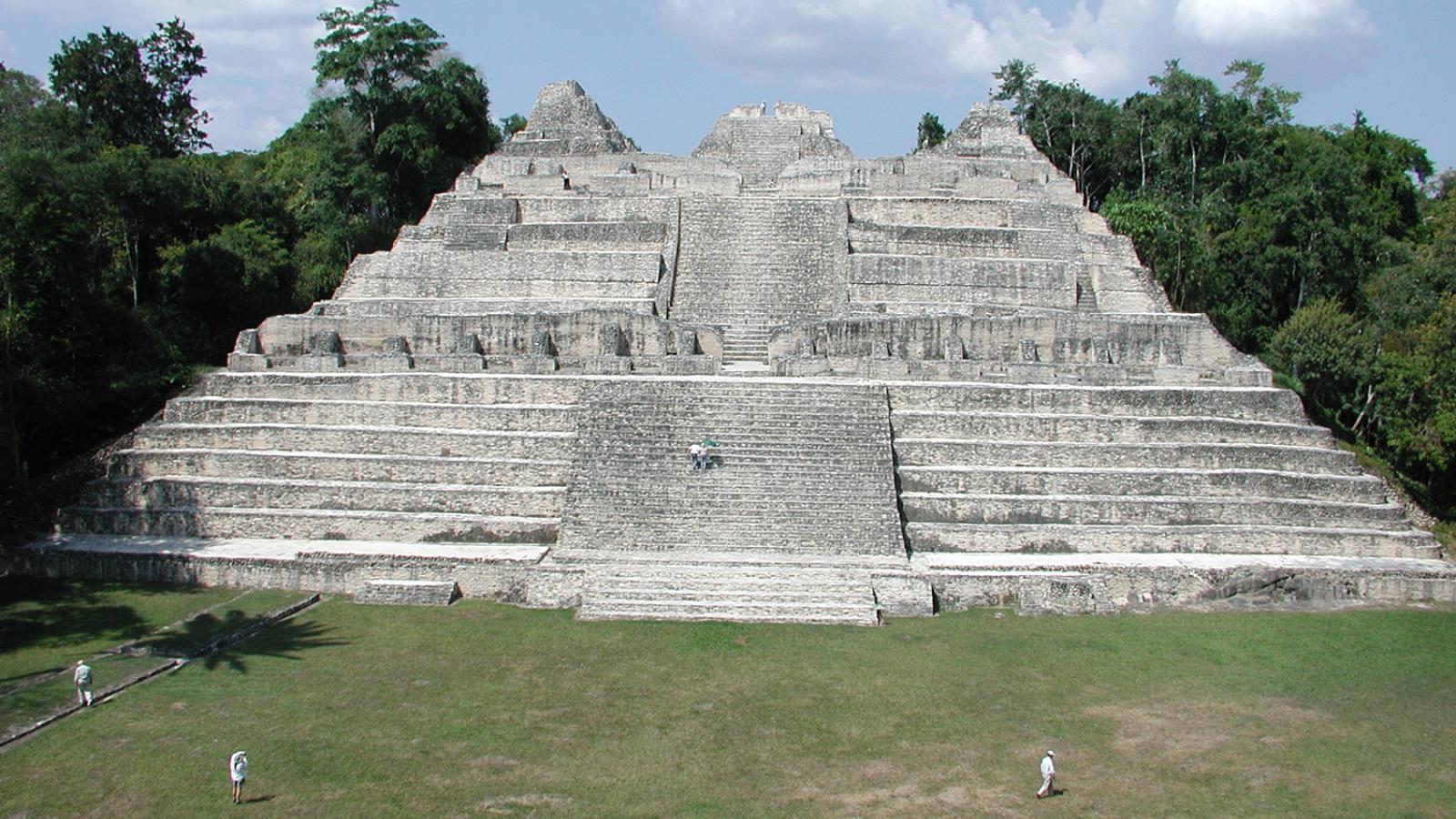Much of the vast Maya city of Caracol, located in present-day Belize, is buried under the jungle.
Last month the PBS NOVA episode “Ancient Maya Metropolis” vividly brought to life the research Visiting Professor of Anthropology Arlen Chase has been doing since 1985 on Caracol.
For 20 years, Chase and his wife Diane Chase of Claremont Graduate University performed their research by cutting into the jungle and drawing maps by hand. It was a slow and labor-intensive process, to say the least.
They started looking for a different technology in 2005, and in 2009 a grant obtained from NASA with a biology colleague permitted them to subcontract the National Center for Airborne Laser Mapping to overfly Caracol in an aircraft and obtain LiDAR (Light Detection and Ranging). The system used laser beams that were projected to the ground and recorded as they bounced back. The result was a revolution in tropical archaeology.
“This was the first place in the tropics to ever use LiDAR in a broad-scale sense,” says Arlen Chase.
The lasers were able to penetrate the jungle canopy and create high-resolution point clouds that resulted in both 2D and 3D images of the ground below the trees, effectively exposing the landscape and ancient ruins of Caracol. A computer algorithm was able to eliminate the forest, exposing hundreds of buildings that had been untouched for over a thousand years.
Computer modeling allowed Chase and others to see the city in precise detail and revealed the feat of urban engineering that it was. In 700 A.D., 100,000 people lived in Caracol, making it the seventh largest city at the time. They built palaces, reservoirs, agricultural terraces and road systems.
“The site is immense. It’s 200 square kilometers. Agricultural fields cover 160 square kilometers. They were practicing sustainable agriculture in an urban city,” says Chase.
So far over 150 residential groups in the city have been excavated, but there are over 9,000. Chase continues the work of excavation. With only a disruption caused by the pandemic, he returns to Caracol every year, and the next season will be his 37th.
At Pomona, Chase teaches courses including Archaeological Theory, Collapse and Transformation, and Mesoamerican Archaeology in the fall. In the spring he does field work at Caracol, folding in students for eight weeks to participate in the research.
The trip is a rigorous one. Participants follow a strict schedule, eating breakfast at 6:30 a.m., driving to the site at 7 a.m., eating lunch together at noon and wrapping up at 4 p.m. After dinner, students head to the lab for at least two hours to process data before lights out at 9 p.m. On Saturdays they excavate for half the day, and on Sunday afternoons they discuss readings with Chase that they’ve been doing during the week.
The site is 56 miles from the nearest town. There’s no electricity, running water or cell phone service. It’s an intensive experience as participants spend all their time together in a rustic, remote location. But Chase says the students and Belizean project members bond together as a tight-knit team.
Students who participate are ones that are interested in learning about archaeology and other peoples and cultures. They don’t necessarily have to be anthropology majors.
“The international programs at Pomona are key to letting people understand how the world works,” he says. “Students’ eyes are opened on these trips.”
The last group Chase took was in 2020. That trip was cut short by the pandemic. He greatly looks forward to returning with students once it’s safe.
“You can’t do archaeology without going to the field,” says Chase.
